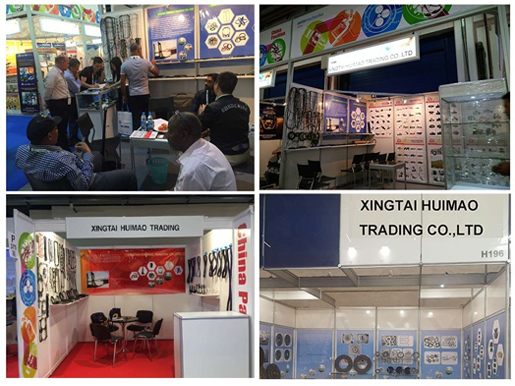7 月 . 27, 2024 00:33 Back to list
Understanding High Pressure Oil Seals and Their Importance in Industrial Applications and Machinery Performance
High Pressure Oil Seal An Essential Component in Modern Machinery
In the realm of mechanical engineering and manufacturing, the integrity of machinery often hinges on the effectiveness of its components. Among these components, the high pressure oil seal plays a critical role, especially in applications where fluids must be contained under significant pressure. High pressure oil seals are essential in various industries, including automotive, aerospace, and industrial machinery, due to their ability to prevent leakage, reduce wear, and extend the lifespan of equipment.
A high pressure oil seal is designed to retain lubricants and prevent the ingress of contaminants, thus ensuring the smooth operation of rotating parts. These seals are typically constructed from durable materials such as elastomers or thermoplastics, which are selected based on the operating conditions they will face. Factors including temperature fluctuations, the nature of the fluid being sealed (e.g., oil, hydraulic fluid), and the pressure levels involved are critical in selecting the appropriate material and design for the seal.
One of the primary functions of a high pressure oil seal is to maintain the integrity of the oil system in machinery. In systems where oil is circulated under pressure to lubricate moving parts, the seal must create a robust barrier against the pressure exerted by the fluid. If the seal fails, not only can this lead to significant oil leaks, but it can also result in increased friction, overheating, and ultimately, catastrophic machinery failure. Therefore, selecting a high-quality oil seal designed for high pressure applications is imperative to avoid costly downtimes and repairs.
high pressure oil seal

High pressure seals come in various designs, including lip seals, O-rings, and full face seals, each suited for specific applications and mounting conditions. The choice of seal design is influenced by factors such as installation ease, space constraints, and the prevailing environmental conditions. For instance, lip seals feature a flexible lip that conforms to the rotating shaft, providing a tight seal that minimizes the escape of oil while allowing for some axial movement. On the other hand, O-rings are often used where circular grooves are available, offering a reliable seal in static applications or low-pressure scenarios.
The technology behind high pressure oil seals has evolved significantly in recent years, incorporating advanced materials and manufacturing techniques to enhance performance and durability. Modern seals are designed to withstand extreme temperatures and pressures, withstanding wear and deformation over extended periods. Innovations such as surface treatments and composite materials have improved resistance to chemical degradation and mechanical stress, making these seals even more reliable in demanding environments.
Regular maintenance and timely replacement of high pressure oil seals are crucial for ensuring the overall performance of machinery. Operators must be vigilant in monitoring for signs of seal wear or failure, such as oil leakage or unusual noise from the machinery. Implementing a scheduled maintenance program that includes inspecting and replacing seals as necessary can significantly prolong equipment life and prevent unplanned breakdowns.
In conclusion, high pressure oil seals are indispensable components that play a vital role in the effective and efficient operation of machinery across various industries. Their ability to contain lubricants and protect against contamination not only safeguards the machinery but also helps maintain operational efficiency. As technology continues to advance, the development of more robust and reliable sealing solutions will undoubtedly enhance the performance of high-pressure systems, paving the way for new innovations in engineering and manufacturing.